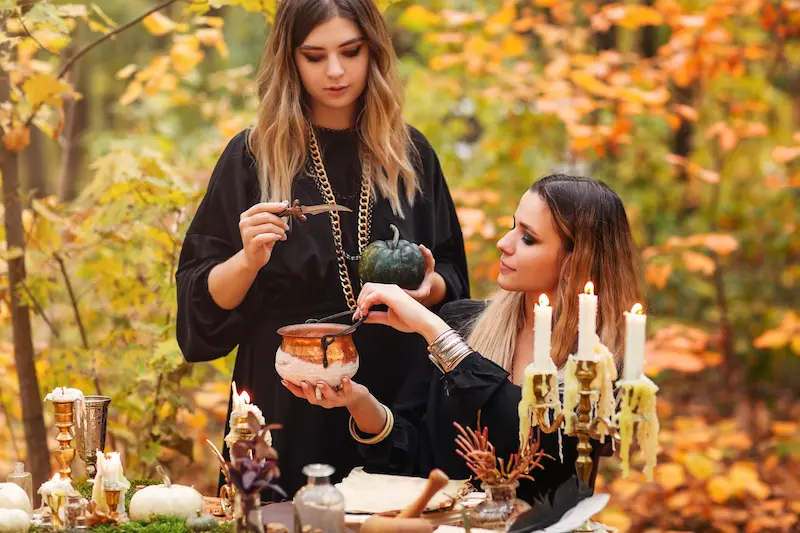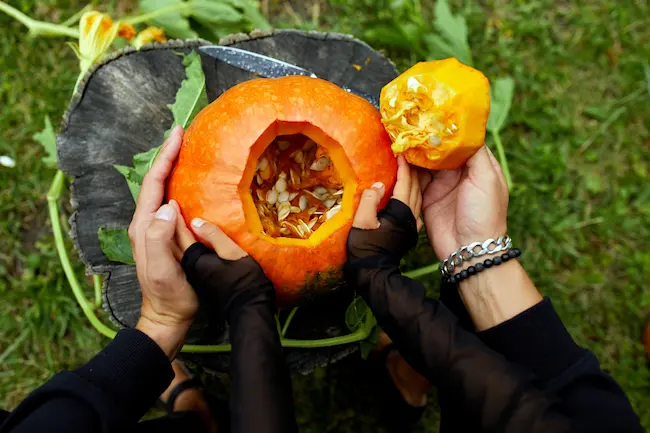The Evolution of Halloween Lights and Decorations
Every October, neighborhoods across the U.S. transform as homes light up with spooky decorations—glowing pumpkins, eerie purple and orange lights, and animatronics that flicker and flash. But have you ever wondered how light became such an important part of Halloween celebrations? Why do we carve jack-o’-lanterns, decorate our houses with string lights, and use glowing props to make the holiday feel so festive?
The answer lies in Halloween’s rich history—one that stretches back thousands of years. From ancient Celtic festivals to today’s brightly lit displays, light has always played a meaningful role in marking the transition between seasons, honoring spirits, and bringing people together. What started as bonfires and lanterns evolved into the creative, illuminated decor we love today. Let’s take a journey through time to explore the roots of Halloween and how lights became part of the fun.
The Celtic Roots: Samhain and the Power of Fire

The origins of Halloween can be traced back to the Celtic festival of Samhain (pronounced “Sow-in”), celebrated by ancient peoples living in present-day Ireland, the UK, and northern France. Samhain marked the end of the harvest season and the beginning of winter—a time when the world was believed to be in flux, and the veil between the living and the dead was at its thinnest.
During this time, the Celts believed spirits of the dead could return to Earth, both friendly and harmful. To ward off evil spirits, communities lit large bonfires at the center of villages. These fires not only offered protection but also served as beacons of community and warmth as people faced the cold, dark months ahead.
In addition to bonfires:
- Families carried embers from the communal fire to light small fires in their homes, ensuring the protective flame stayed with them.
- Some villagers wore animal masks and costumes to disguise themselves from wandering spirits. These costumes were the earliest form of what we now recognize as Halloween costumes.
The significance of light and fire in Samhain was symbolic—it represented life, warmth, and protection during a time when nature itself seemed to be dying. This theme of using light to fend off darkness laid the foundation for many Halloween traditions we know today.
Medieval Europe: The Rise of All Hallows’ Eve and Candle Traditions

As Christianity spread across Europe, many pagan festivals were reinterpreted through a Christian lens. Samhain was no exception. By the 9th century, the Catholic Church established All Saints’ Day (also called All Hallows’ Day) on November 1 to honor saints and martyrs, with All Hallows’ Eve falling on October 31—the day we now call Halloween.
During All Hallows’ Eve, people believed that spirits of the dead could still wander the earth, just as in Samhain. To honor their deceased loved ones, families lit candles and lanterns in windows or near graves. This light was a way to guide the spirits home and keep evil spirits away. The use of light to honor the dead became deeply woven into these rituals.
- People carried handmade lanterns during nighttime processions, which symbolized the souls of the departed.
- Lighting candles inside homes became a way to protect families from any lingering bad spirits.
- In some regions, large processional torches were carried through the streets to mark the occasion.
As the centuries passed, these customs evolved but the tradition of lighting candles remained—a direct ancestor of today’s jack-o’-lanterns and Halloween lighting displays.
The Story of the Jack-o’-Lantern: From Turnips to Pumpkins
One of the most iconic symbols of Halloween is the jack-o’-lantern, with its glowing grin lighting up doorsteps across neighborhoods. But did you know the tradition began with carved turnips in Ireland?
According to Irish folklore, a man named Stingy Jack tricked the devil multiple times, earning him a fate neither in heaven nor hell. As punishment, he was condemned to wander the earth with only a burning ember inside a hollowed-out turnip to light his way. People in Ireland and Scotland began carving their own “Jack’s lanterns” from turnips and potatoes, placing them near doors and windows to scare off wandering spirits like Jack’s.
When Irish immigrants came to America in the 19th century, they discovered that pumpkins—native to North America—were easier to carve than turnips. Over time, carved pumpkins became a Halloween staple, with candles placed inside to create that familiar glowing effect. Today’s jack-o’-lanterns are more elaborate than ever, featuring intricate designs and LED lights, but their purpose remains the same: to ward off darkness and add a playful glow to the holiday.
Modern Halloween Lights and Decorations: From Practical to Playful

Fast forward to today, and Halloween lights are everywhere—from string lights draped along porch railings to glowing skeletons and color-changing inflatables. The shift from traditional candles and bonfires to modern LED lights began in the mid-20th century, as electric lighting became safer and more affordable.
Now, Halloween lights serve a dual purpose:
- They set the spooky mood: Orange, purple, and green lights create the eerie atmosphere we associate with Halloween.
- They keep trick-or-treaters safe: Well-lit homes and pathways help prevent accidents during neighborhood trick-or-treating.
Common modern Halloween lighting elements include:
- String lights in Halloween-themed colors like orange, purple, and black.
- Light-up inflatables such as ghosts, witches, and pumpkins.
- Projection lights that display images of spiders, bats, or haunted scenes on walls and garages.
- Pathway lights to guide trick-or-treaters and add decorative flair to yards.
The evolution of Halloween lighting reflects both practical needs—such as safety—and the desire to enhance the festive spirit with creative displays. Today, it’s common for neighborhoods to compete to see who can create the most impressive light show, making Halloween decorating a fun, community-wide activity.
FAQ: Common Questions About Halloween Lights and Decorations
Why do people use orange and purple lights for Halloween?
Orange represents fall and harvest, while purple adds an eerie, mysterious vibe. Together, they create the perfect spooky atmosphere.
What are some energy-efficient ways to decorate with Halloween lights?
Use LED lights and set them on timers to reduce energy consumption. Solar-powered lights are another great option for outdoor decorations.
Can Halloween lights be left on overnight?
It’s safer to turn off lights before bed or use timers. This prevents overheating and saves energy.
How did pumpkins become a part of Halloween?
Irish immigrants brought the tradition of carving jack-o’-lanterns to the U.S. Using pumpkins made it easier, and the tradition stuck!
What’s the best way to safely light a jack-o’-lantern?
Use battery-operated candles or LED tea lights instead of real candles to reduce the fire hazard.
Light Up Your Halloween with Tradition and Fun

From Samhain’s bonfires to today’s glowing jack-o’-lanterns, lights have always been a symbol of protection, celebration, and connection during Halloween. Whether you’re lighting a pumpkin on your porch, setting up spooky inflatables, or hanging festive string lights, you’re taking part in a tradition that spans centuries.
The use of light during Halloween has evolved, but the meaning behind it has stayed the same: light brings people together, guides us through the dark, and makes even the spookiest nights feel warm and fun.
Whether you’re setting out glowing pumpkins, hanging string lights, or creating a haunted yard display, Halloween lights are more than just decorations—they’re part of a rich history that spans centuries. So this October, as you light up your home, take a moment to appreciate how these traditions connect us to the past while bringing joy to the present. Happy Halloween! 🎃

